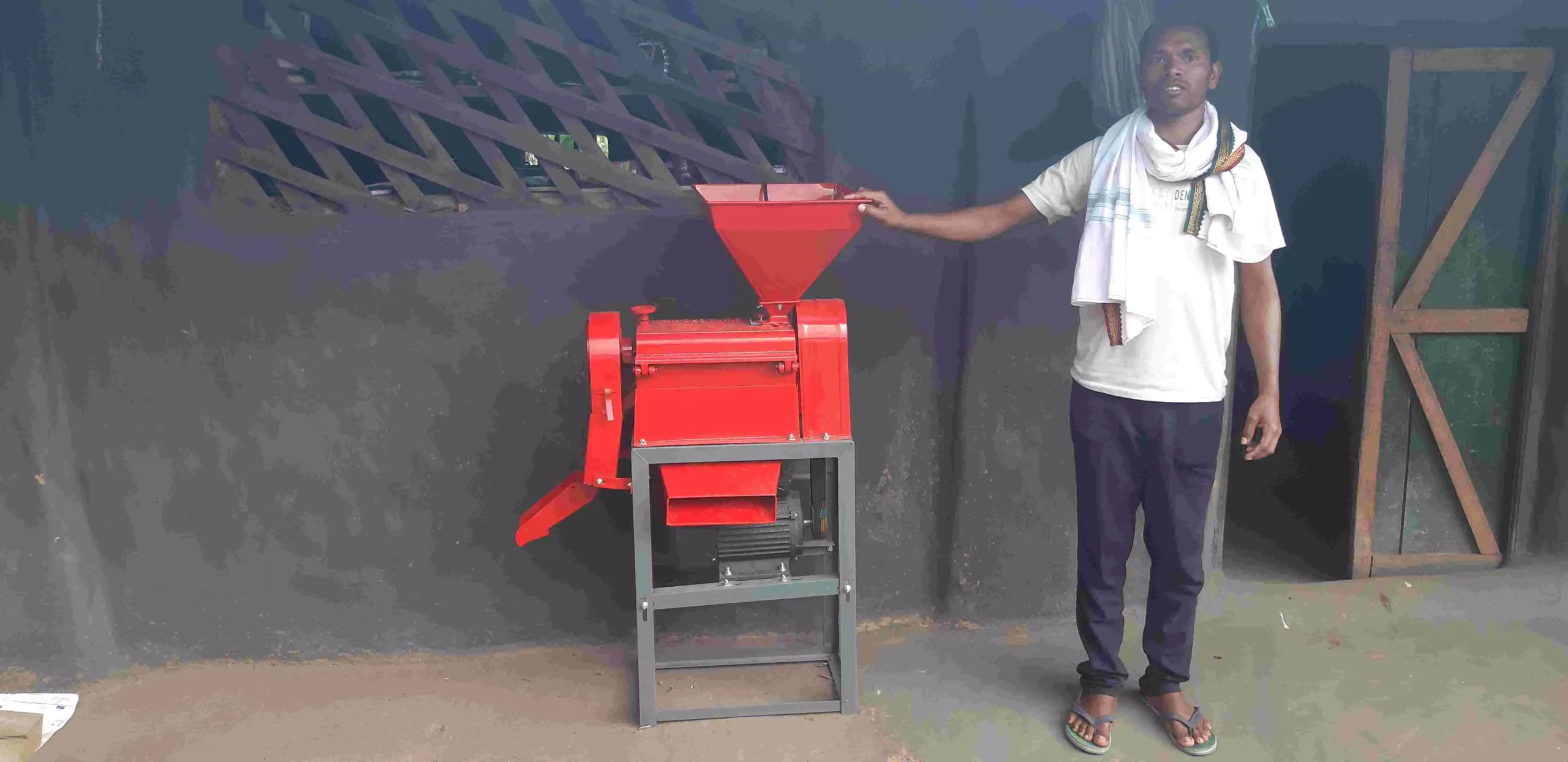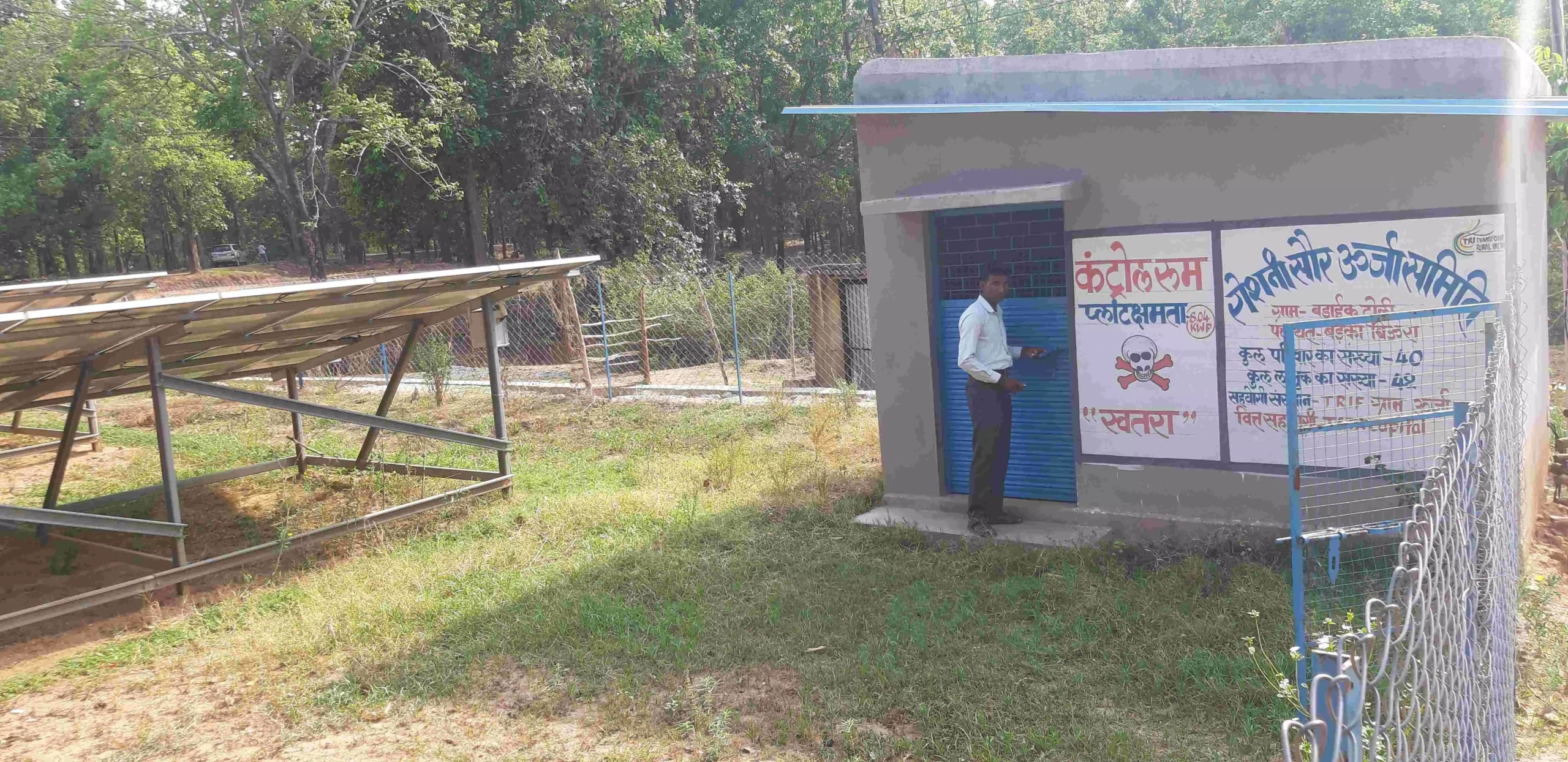Kurdeg (Simdega), Jharkhand
A barely-there kaccha road (dirt road) with huge, old banyan trees on either side leads to Saraipani and Baraiktoli, two tribal villages in the forested hills of Simdega, one of the most backward districts of Jharkhand.
Till two years ago, these villages under Barkibiura panchayat were cut-off from the outside world. There was no electricity and the area was gripped by darkness, after sunset.
In June 2020, things changed with the arrival of solar panels. In order to facilitate the transportation of the solar panels, the tools and other equipment, the villagers built a kaccha road through shramdan (voluntary labour). Over 90 tribal households in Saraipani and Baraiktoli were lit up at last.
“For over hundred years, when our forefathers settled in these hills, we lived in a primitive age with no electricity. We had never seen an electric bulb in our village. But now we have power supply 24 hours of the day and night,” Adman Bara, president of Prakash Saur Urja Samiti in Saraipani village told Gaon Connection.
Watch Also
This Samiti (committee), set up by the villagers with 70 per cent of the members being women, ensures the smooth functioning of the solar power grid. The project was conceived by Transform Rural India Foundation (TRIF), a non-profit, along with financial support from Tata Capital and technical guidance from Gram Oorja Solutions Pvt Ltd (a rural energy solutions company).
“We had an extremely hard life. Women could not cook after dark, children could not study. In an emergency, dibri (a small kerosene wick lamp) was the only source of light. It was difficult to save family members and grains during animal attacks,” said Adman Bara.
But now, solar energy powers the local primary school, anganwadi, health sub centre, temple and church. Farming activities have become easier and, with that, the income of the rural households has increased.
Apart from Saraipani and Baraiktoli, 11 more tribal villages in Kurdeg block of Simdega district have been electrified under TRIF’s Micro Solar Power Grid project that was started in June 2020.
“As of now, 712 households in 13 villages of Kurdeg block have benefitted from the solar grid project. We are planning to expand the project in 10 more villages to cover 512 households in Simdega and Kersai blocks,” Ashok Kumar, TRIF’s director in Jharkhand, told Gaon Connection.
“The project was started to supply power to far-flung areas of the state, and particularly vulnerable tribal groups such as Korwa and others have benefited from it,” the TRIF director added.

In June 2020, solar panels were installed in the villages.
Sunshine brings smiles
Sanjay Toppo, a resident of Saraipani village, said that the solar energy project had increased livelihood opportunities for the villagers, many of whom have opened up shops and can sell products till late evening. “Now village women are using machines to process paddy, instead of spending long laborious hours doing that by hand. It is saving villagers’ time and energy and providing them earning opportunities,” said Sanjay Toppo.
Televisions, refrigerators, fans and other products are also available to the villagers to make their lives comfortable, he added.
“Earlier farmers were using diesel generators to extract groundwater to irrigate their fields, which was expensive. But now they are using solar pumps to withdraw groundwater for watering their crops, at a much lower cost,” said Sanjay Toppo.

Saraipani villager with paddy processing machine as new source of income after power supplied through solar grid.
Solar power project
Talking about the solar power project, TRIF block coordinator in Kurdeg block, Javed Sayyed said: “TRIF has spent about Rs 30 to 40 lakh for each solar grid that has a capacity of anything between 8 kilowatt to 15 kilowatt, depending on the number of households in the village. Each grid has the capacity to supply power continuously for three to five days without having to recharge the batteries,” he said.
According to the block coordinator, an operator has been appointed by the respective village committees who is paid with funds generated through power connection charges. The owner of the plot where the power house stands, is also being paid for leasing his land.
Taramani Tigga, treasurer of Prakash Saur Urja Samiti in Saraipani village said that each household has given Rs 1,000 for power connection. In addition, a monthly charge of Rs 10 per unit along with Rs 100 as the fixed fee is paid by each household. “The Samiti has around Rs one lakh in its account now and this money is being used for repair works, the salary to the operator, etc,” she said.

As of now, 712 households in 13 villages of Kurdeg block have benefitted from the solar grid project.
Benefits to education
Saraipani has a couple of ITI and college students, including young women, who, ever since the advent of electricity to their village, now say they can dream of a bright academic future as well as a government job.
Asher Toppo, a college student who once stayed away from his home in the village as he could not study there because of no electricity, said that was no longer the case. He and others like could study late into the night for as long as they wanted.
Rashmi Tirki, another student from Saraipani, said that each village in Jharkhand should be electrified with solar power as it ensured a bright future for the next generation.
There was a time when children, who went to school in Kurdeg town 10 kilometres away ate the previous day’s leftovers because their mothers could not cook in the dark hours of the early mornings.
Not anymore and the children set off to school happily after a freshly cooked breakfast.
Electrifying schools, anganwadis and health centres
Parmanand Das of Baraiktoli village, which has also been electrified through solar energy, said that everyone in the village had benefited from the electrification and the government should provide electricity to every village in the state.
“Villagers are now spending time planning development activities in the village. It is saving their time, money, energy and spreading harmony in the society. Women are also coming out of their houses to participate in the Samiti meetings and other activities,” Das said.
Jilani Kiro of Baraiktoli said that the power supply had united the villagers. Each beneficiary attends the monthly village level meeting, where other than presenting a monthly report of power supply charge collection, they also discuss other matters crucial for the progress of their village, she added.

Each grid has the capacity to supply power continuously for three to five days without having to recharge the batteries.
Till 2020-21, the village school, anganwadi, the health sub centre and religious sites were functioning without power, but they are electrified now, said Sobha Rani Lakra of Baraiktoli village.
“Now there is no difference between day and night. We enjoy light 24 hours and it saves us from animal and insect attacks,” Ramu Korwa of Ravan Khota tola said.
Teacher at the upgraded primary school in Ravan Khota, Kerena Pumpa was elated at the arrival of electricity to the village school. “This also helps keep elephants and other wild animals away from the village, and protects the stored paddy from animal attack,” she said.
Sisir Toppo, secretary of Prakash Saur Urja Samiti, said that the TRIF will monitor and supervise the functioning of the solar grid for five years. After that, the villagers will maintain the project with the collection charges from each household.
This story has been done as part of a collaboration with Transform Rural India Foundation.


















